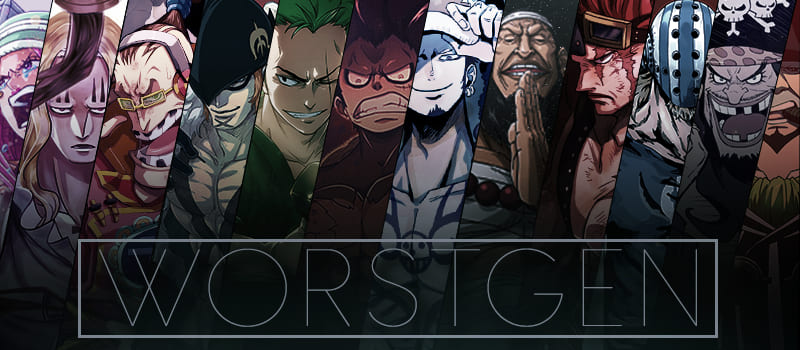It's possible that Eiichiro Oda was inspired by the concept of the Six Paths of Samsara and the idea of the Rinnegan and the Six Paths of Pain from Naruto when designing certain key elements and characters in One Piece. The Rinnegan, a powerful and mystical eye in Naruto, grants its user control over the Six Paths of Pain—six distinct abilities that represent different aspects of existence, much like the Six Realms of Samsara in Buddhist philosophy. In One Piece, certain characters appear to possess Rinnegan-like eyes in key moments, further strengthening the connection between the realms and their influence over the world.
Here is how the theory connects these six realms to the characters and their symbolic roles in the story:

1. Luffy as Deva (God Realm)

2. Robin as Human (Manushya Realm)

3. Zunesha as Tiryag (Animal Realm)

4. Mihawk as Asura (Demigod Realm)

5. Big Mom as Preta (Hungry Ghost Realm)

6. Imu as Naraka (Hell Realm)

Nirvana: The Ultimate Liberation
In the Six Realms of Samsara, there is Nirvana. Nirvana represents the ultimate goal: liberation from the cycle of birth, death, and rebirth, and the attainment of a state of ultimate peace and enlightenment. It’s the cessation of suffering and the end of the cycle of Samsara. In One Piece, Nirvana can be seen as the ultimate aspiration of Luffy’s journey and the Straw Hats’ collective mission. Luffy’s vision of a free world, where all can live without oppression, mirrors Nirvana’s promise of peace and unity. Characters like Robin, through her pursuit of truth, and Mihawk, through his mentorship of Zoro, embody paths toward liberation by overcoming their respective realms’ limitations. The struggle against Imu’s Naraka-like tyranny symbolizes the fight to break free from the chains of Samsara, suggesting that One Piece’s climax may represent a metaphorical Nirvana—a world reborn through freedom, connection, and the triumph of the human spirit.
Here is how the theory connects these six realms to the characters and their symbolic roles in the story:

1. Luffy as Deva (God Realm)

- The Deva realm represents joy, freedom, and divine qualities but also the risk of complacency.
- Luffy, through his Nika (Sun God) Devil Fruit, embodies liberation, light, and boundless joy. His carefree and optimistic nature mirrors the divine attributes of Devas.
- However, his carefree nature often place him at risk of underestimating challenges, reflecting the complacency associated with this realm. Luffy’s ultimate goal of creating a free world aligns with the Deva's yearning to transcend their cycle.
2. Robin as Human (Manushya Realm)

- The Human realm balances joy and suffering, offering the greatest potential for enlightenment.
- Robin’s life reflects this duality: immense suffering (the destruction of Ohara, her fugitive years) and moments of joy (finding belonging with the Straw Hats).
- Her epithet “Devil Child” and technique “Demonio Fleur” symbolize the human struggle to integrate light and shadow. Her pursuit of truth through knowledge embodies the Human realm’s path to liberation.
3. Zunesha as Tiryag (Animal Realm)

- The Animal realm is characterized by instinct, ignorance, and subjugation by others.
- Zunesha’s endless wandering as punishment for an ancient crime reflects the suffering and lack of agency in the Tiryag realm. It’s possible Zunesha was manipulated into committing a crime, unaware of its consequences, aligning with the realm’s theme of exploitation. This manipulation underscores the ignorance and burden of the Animal realm.
4. Mihawk as Asura (Demigod Realm)

- The Asura realm is marked by pride, competitiveness, and a relentless warrior spirit, often leading to isolation and dissatisfaction.
- Mihawk, as the Strongest Swordsman in the World, embodies the Asura’s quest for dominance and perfection. His isolated life on Kuraigana Island and his constant search for worthy opponents reflect the Asura’s competitive nature.
- His mentorship of Zoro hints at his potential for growth, showing that even those consumed by pride can find redemption through connection and purpose.
5. Big Mom as Preta (Hungry Ghost Realm)

- The Preta realm is defined by insatiable cravings and unfulfilled desires, leading to constant suffering.
- Big Mom’s uncontrollable hunger and her greed for power and control embody the Preta’s unquenchable thirst. Her rampages during hunger pangs symbolize the destructive nature of unchecked desires.
- Despite her immense power, her emotional void and reliance on others to fulfill her cravings highlight the Preta’s suffering.
6. Imu as Naraka (Hell Realm)

- The Naraka realm represents immense suffering, hatred, and malice, often resulting in prolonged torment.
- Imu, the shadowy ruler of the world, embodies the oppressive and punitive nature of Naraka. Their potential immortality symbolizes eternal entrapment in cycles of suffering and control.
- Imu’s actions, such as erasing entire civilizations, reflect the malice of Naraka, contrasting with Luffy’s light and freedom in a battle between liberation and oppression.
Nirvana: The Ultimate Liberation
In the Six Realms of Samsara, there is Nirvana. Nirvana represents the ultimate goal: liberation from the cycle of birth, death, and rebirth, and the attainment of a state of ultimate peace and enlightenment. It’s the cessation of suffering and the end of the cycle of Samsara. In One Piece, Nirvana can be seen as the ultimate aspiration of Luffy’s journey and the Straw Hats’ collective mission. Luffy’s vision of a free world, where all can live without oppression, mirrors Nirvana’s promise of peace and unity. Characters like Robin, through her pursuit of truth, and Mihawk, through his mentorship of Zoro, embody paths toward liberation by overcoming their respective realms’ limitations. The struggle against Imu’s Naraka-like tyranny symbolizes the fight to break free from the chains of Samsara, suggesting that One Piece’s climax may represent a metaphorical Nirvana—a world reborn through freedom, connection, and the triumph of the human spirit.
